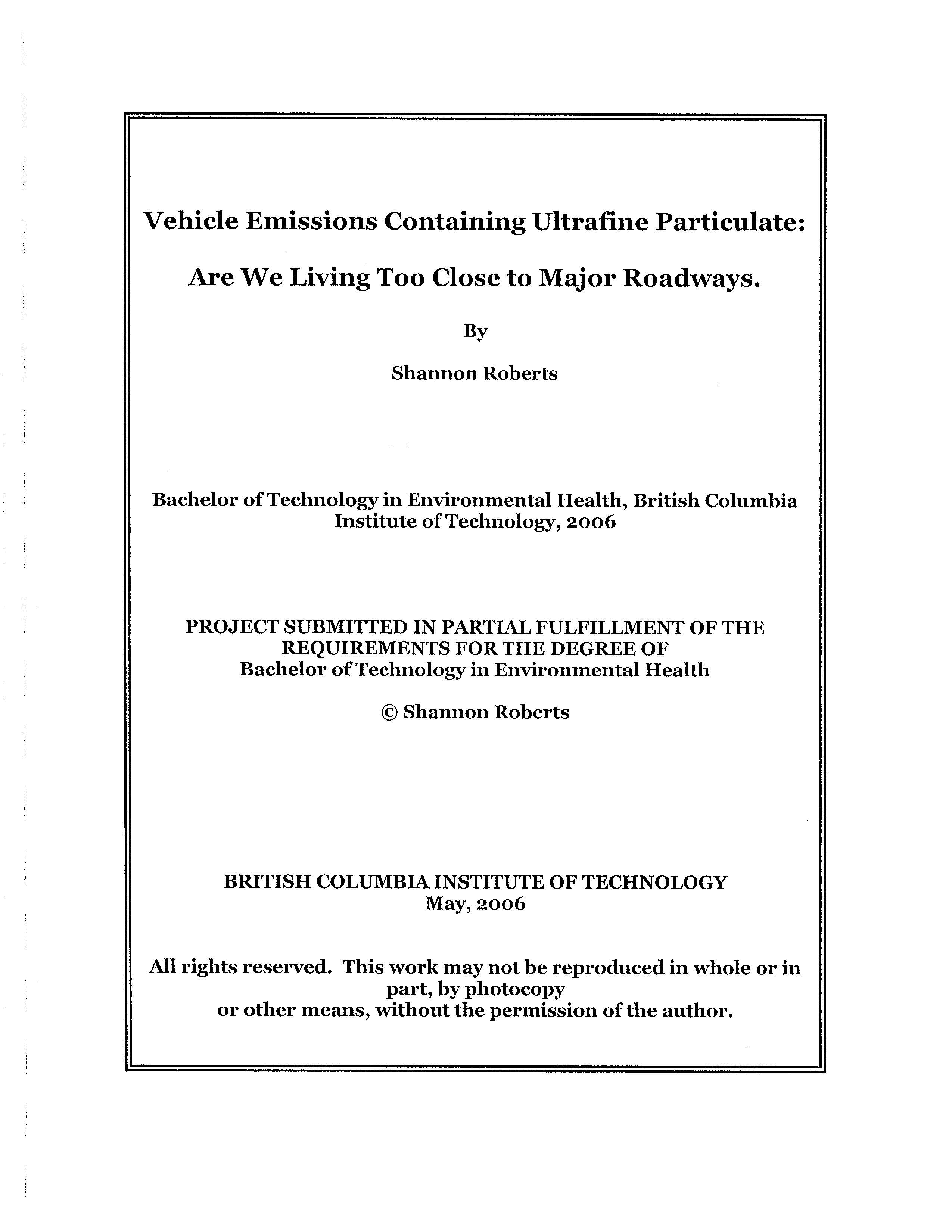Vehicle Emissions Containing Ultrafine Particulate
Are We Living Too Close to Major Roadways
DOI:
https://doi.org/10.47339/ephj.2014.240Keywords:
Air quality, Vehicle emissions, Ultrafine particulate, Roadway proximityAbstract
Background
Ultrafine particulate is classified as particulate matter that is 0.1 micron in diameter and smaller. According to the BC Ministry of Health (2000), air-borne particulate matter generated by combustion is the dominant air pollution problem in British Columbia from a public health perspective. Vehicle exhaust is a major contributor of ultrafine particulate (UFP) in the atmosphere (Zhu, Hinds, Kim, Shen & Sioutas, 2005). Studies have linked high levels of ultrafine particulate matter to increases in emergency room visits, hospitalizations, and days lost from school and work (B.C. Ministry of Health, 2000). The purpose of the study was to examine the horizontal distance from Highway No. 1 where exposure to elevated concentrations of ultrafine particulate was likely due to vehicle emissions on this major roadway.
Methods
A portable P-TRAK manufactured by TSI was used to collect the data for this project as it provided real time data and was able to datalog (TSI, n.d). The P-Trak measures ultrafine particles by condensation counting technology in units of particles per cubic centimeter (cm3). The sampling was conducted in Burnaby at the Burnaby Lake Regional District Park. A background sample was collected at a greater distance from Highway #1 and compared to the subsequent samples that were collected at distances of 50, 100, and 250 meters in the park.
Results
Thirty samples were collected at each location for a total of 120 data points. The Analysis of Variance (ANOVA) indicated that the data was not normally distributed and that there was a significant difference of UFP concentrations at all of the locations. Correlation/regression determined that there was moderate relationship between UFP concentrations and distance from the highway and that with each meter traveled from the 50 meter start point next to the highway there was a 120 particles/cm3 decrease.
Discussion
The results of this study indicated that traffic on Highway No. 1 is responsible for elevated UFP concentrations in the vicinity of the Highway. Furthermore, it was determined that UFP concentrations exceeded background levels at an offset of at least 250 meters from the roadway. Finally, it was determined that UFP levels decreased as the distance from the freeway increased. These results indicate further research should be conducted to determine the influence of UFP concentrations on human health and establish an acceptable exposure limit. The findings of this study should be considered during planning for land use next to major roadways. For example, commercial/industrial buildings could be placed closest to roadways where public buildings that serve the most vulnerable including daycares and hospitals should be located at greater distances.
Downloads

Downloads
Published
How to Cite
License
Copyright (c) 2006 Shannon Roberts

This work is licensed under a Creative Commons Attribution-NonCommercial-NoDerivatives 4.0 International License.
Content on this site is licensed under a Creative Commons Attribution-NonCommercial-NoDerivatives 4.0 (CC BY-NC-ND 4.0) license.
